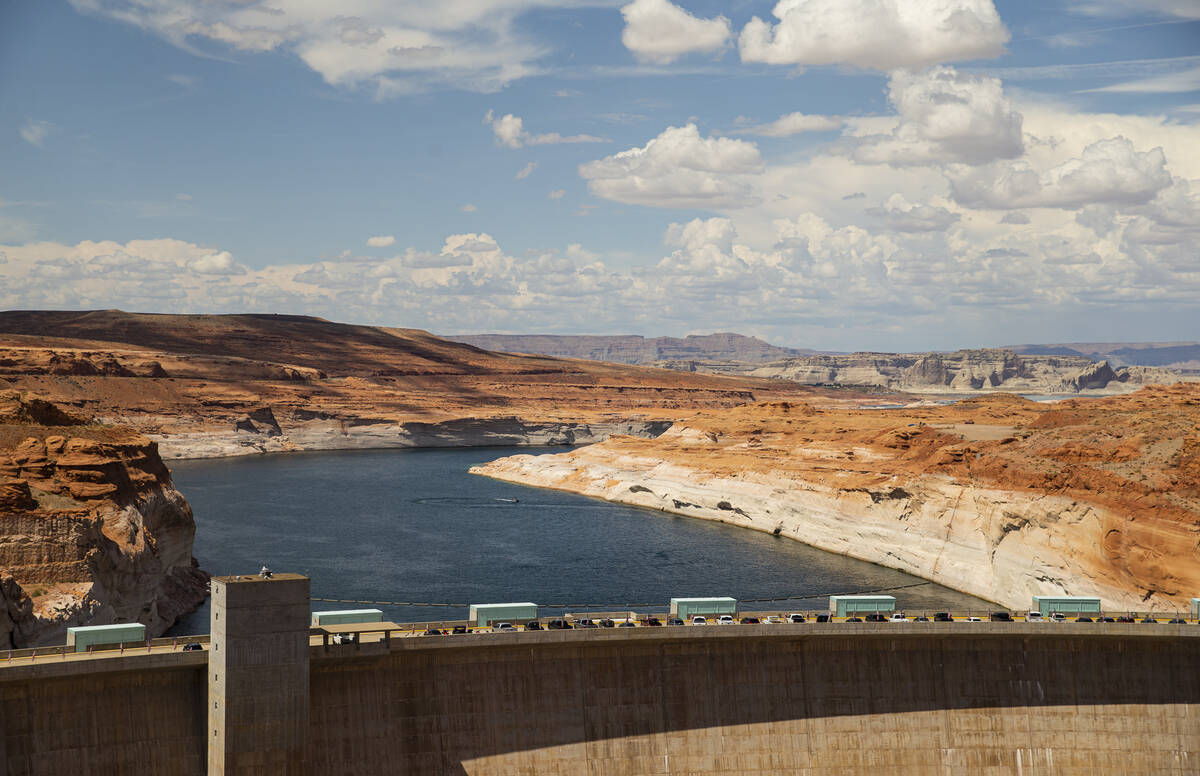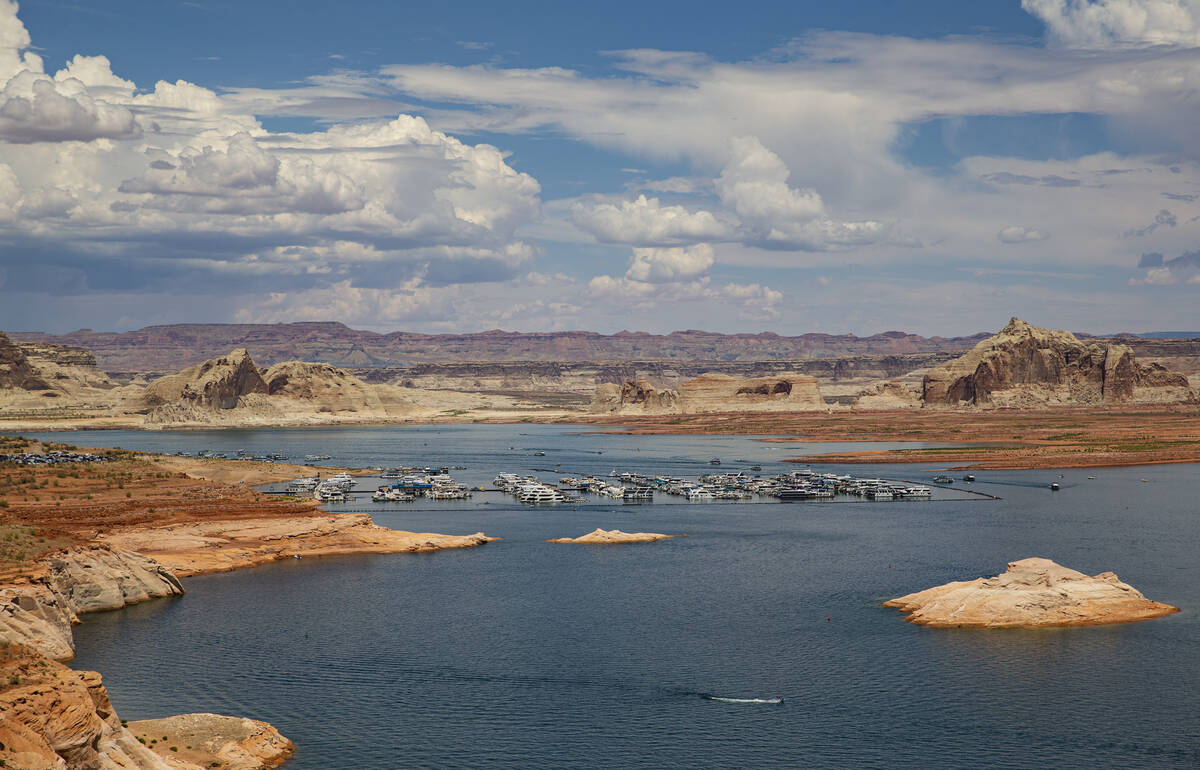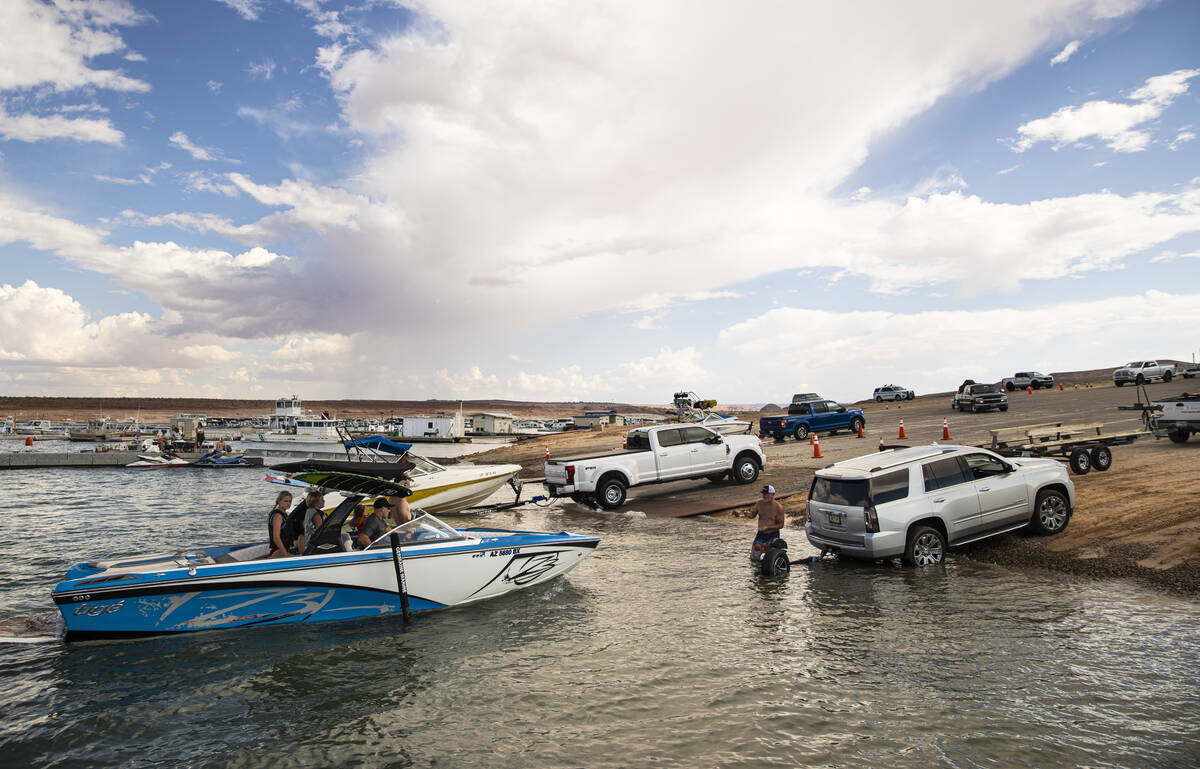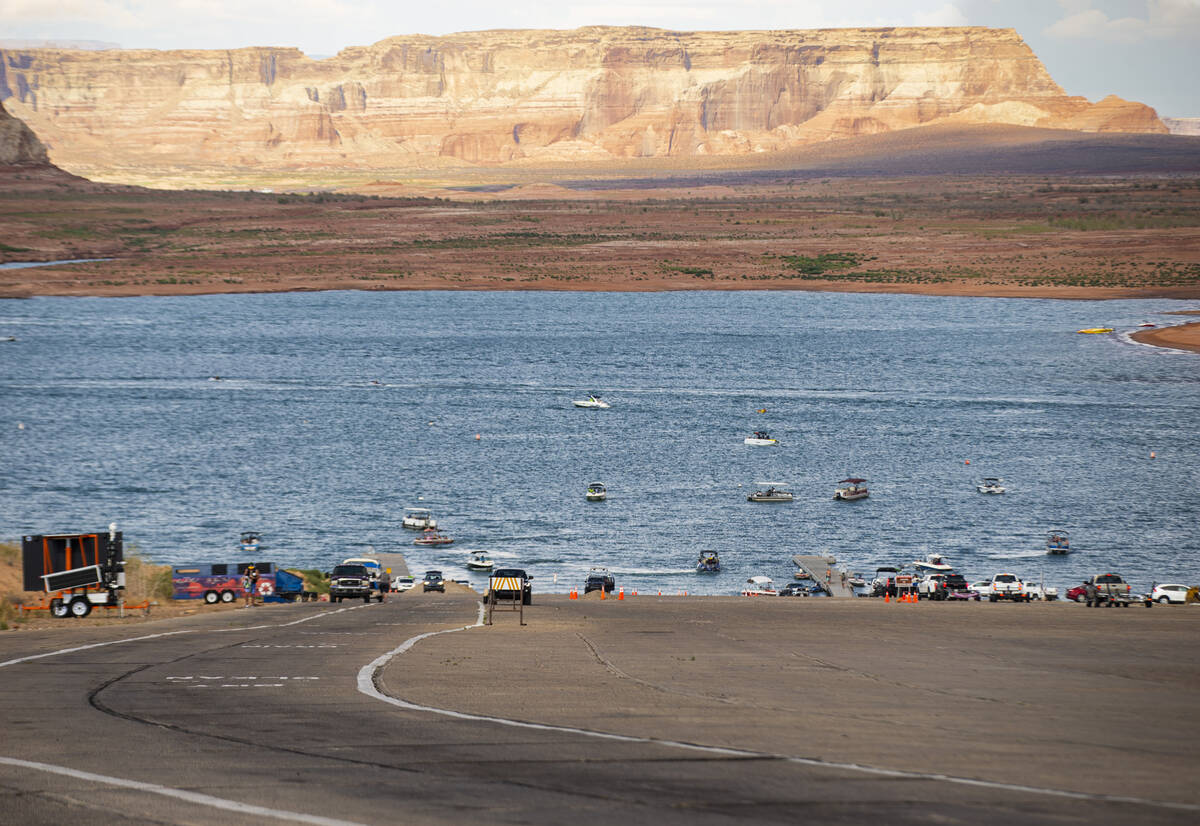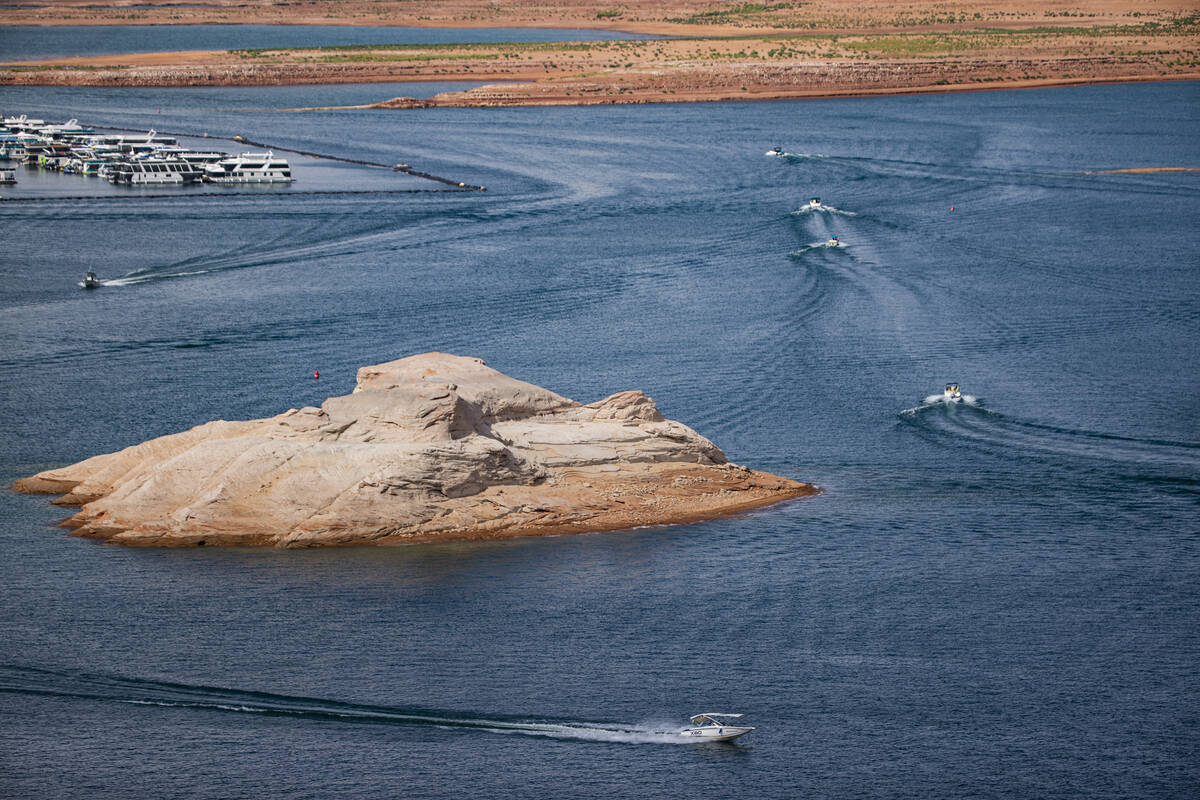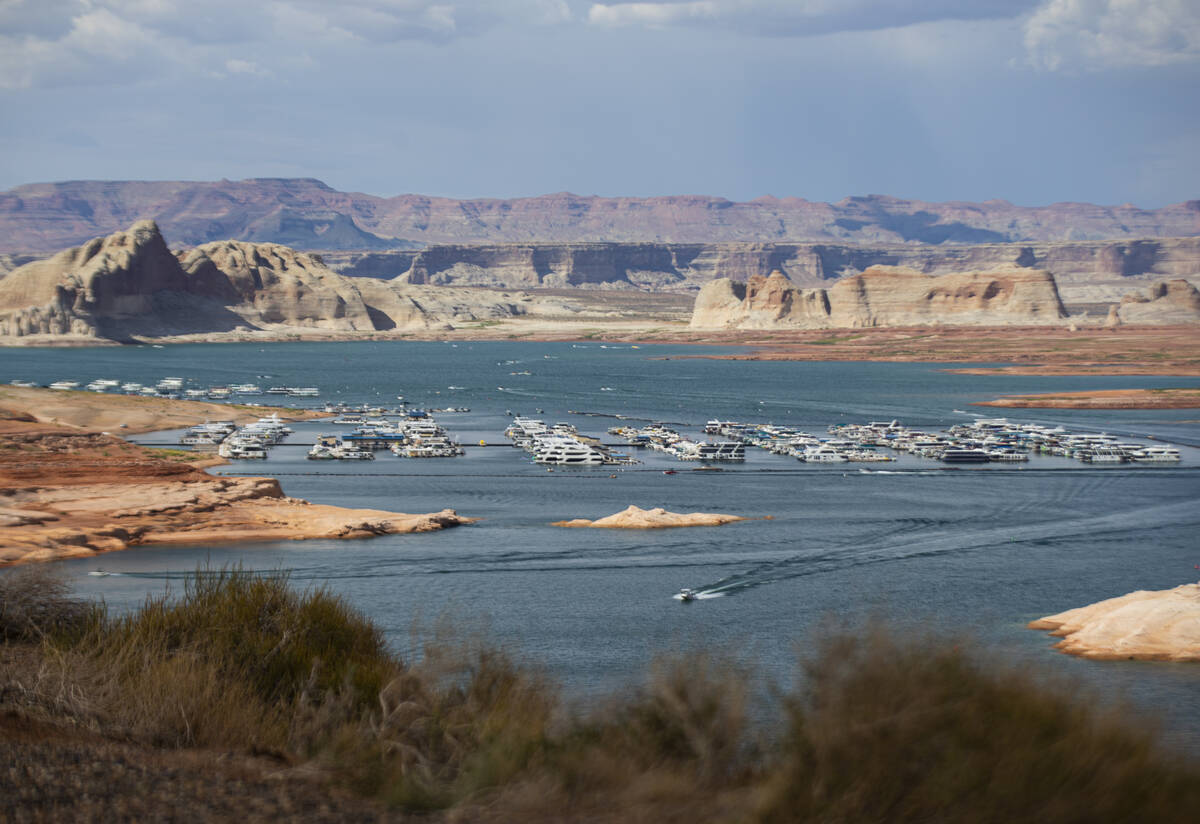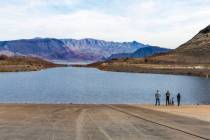Nevada, other states lay out future goals for Colorado River
Nevada and the other Colorado River basin states are laying out their goals for the future of the river that supplies water to some 40 million Americans in the Southwest.
States, cities, farmers, tribes, environmental groups and more submitted comments this month to the Bureau of Reclamation as part of the lengthy process for rewriting the rules that govern how the river and its major dams and reservoirs will be managed in the coming decades.
The ideas run the gamut: from California farmers with the oldest and most senior rights calling for the new rules to follow the longstanding priority system, to calls for the federal government to evaluate retrofitting — or even decommissioning — Glen Canyon Dam at Lake Powell in order to protect water levels at Lake Mead.
The new rules will replace the existing guidelines that expire at the end of 2026, rules that even with multiple revisions and additional drought agreements have fallen far short of keeping Lake Mead and Lake Powell from dropping to record low levels in recent years.
Most of the major players seem to agree that the situation on the Colorado River will only get worse as climate-change-fueled drought continues to ravage the West, and that the amount of water pulled out of the river collectively each year needs to be much smaller to ensure that the system won’t crash in the future.
It’s just the pesky matter of figuring out who gets less water.
Nevada’s priorities
Nevada has the smallest share of the river, with its 300,000 acre-foot annual allocation representing about 2 percent of the total amount of water divided up among the seven basin states and Mexico.
In recent years, Southern Nevada, where 90 percent of the water comes from the Colorado River by way of Lake Mead, has used far less than its full share thanks in large part to aggressive conservation measures that have helped the valley drastically reduce its consumptive water footprint.
As states start the process of negotiating for the future over the next several years, Nevada hopes to lead by example, said John Entsminger, general manager of the Southern Nevada Water Authority and Nevada’s lead Colorado River negotiator.
“Obviously we have to negotiate to have sufficient water supplies to ensure the welfare of our community. But I think we need to do so in a way that encourages the rest of the basin to move towards sustainability and equilibrium,” he said in a recent interview. “The first step is everyone acknowledging that it’s all of our problem, which may seem simple. But there’s certainly interests in the basin that feel more at risk than others.”
One important step, Enstminger said, is giving all of the river’s water users more predictability in the future, no matter how bad the drought gets.
That kind of predictability is something that has not yet come for the river despite other agreements struck in 2007, 2019 or even the recent agreement between Nevada, Arizona and California to save millions of acre-feet of water over the next three years.
“You need to agree to a long-term set of operating guidelines so that everyone has a pretty good idea of what to expect under different hydrologies so that we can plan for that,” Enstminger said.
Proposing tighter reins on farms
Three of the largest urban water delivery agencies in the lower basin, which collectively serve roughly 27 million Americans in Southern Nevada, the Phoenix metro area and Los Angeles, are asking the federal government to look at tightening the reins on farmers to make sure water isn’t being wasted.
The Southern Nevada Water Authority, the Metropolitan Water District of Southern California and the Central Arizona Water Conservation District wrote in a joint comment letter that the Department of Interior should update and apply a regulation known as “Part 417,” which gives the federal government the power to limit agricultural water deliveries to an amount that the agency deems is “reasonably required for beneficial use.”
Municipal water accounts for roughly 20 percent of the water used from the Colorado River, while agriculture makes up the other 80 percent.
“We cannot solve this problem on our own. In this time of shortages and other possible mandatory reductions, as the water providers with more junior rights, our agencies are potentially the most at risk if water is wasted,” the urban water providers wrote.
But Entsminger does not think the beneficial use restrictions should solely be applied to farms, saying that the urban sector shouldn’t be off the hook, either.
Some of the major water conservation programs that Southern Nevada has undertaken in recent years, especially the ban on irrigating nonfunctional grass turf, “should be the requirement in any municipal setting that uses Colorado River water,” Entsminger said.
Seeking permanent cuts below Hoover Dam
The four upper basin states (Colorado, Utah, New Mexico and Wyoming) wrote in a joint letter that the post-2026 guidelines need to address the current imbalance between demand from users and actual supply in the river.
Doing so will require “permanent Lower Basin reductions under most if not all operating conditions,” the upper basin states wrote.
One idea they offered up is to account for the water lost to evaporation and system inefficiencies as it gets delivered throughout the basin, which research suggests is somewhere in the range of 1.2 million to 1.5 million acre-feet a year — or four to five times Nevada’s share of the river.
It’s a concept that six of the seven states had found agreement on earlier this year in a proposal that would put the brunt of those reductions on California, the basin’s largest water user with an annual share of 4.4 million acre-feet.
California disagreed with the accounting, and eventually a separate deal was struck between Nevada, Arizona and California to voluntarily conserve 3 million acre-feet of water in total between 2023 and the end of 2026.
Lake Powell and Glen Canyon Dam
The upper basin states also asked the federal government to look at new strategies aimed at protecting “storage and critical elevations at Lake Powell and Lake Mead.”
But the three lower basin states believe the agency should evaluate possible retrofits to Lake Powell’s Glen Canyon Dam in order to ensure that enough water can be sent downstream to Lake Mead and Mexico.
Those modifications to the dam would be made in order to ensure that water could continue to be safely released at lower elevations than is currently believed possible — a concept that has been picking up steam in recent months.
Several environmental advocates and groups, including the Center for Biological Diversity, Living Rivers, and even Clark County Commissioner Tick Segerblom, signed onto a letter that calls on the federal government to consider alternatives that include decommissioning Glen Canyon Dam.
Some farmers are even getting on board with the idea, with Imperial Irrigation District farmers Mike and James Abatti saying in their comment letter that the reality on the river means those ideas must be on the table.
“Past proposals by environmental groups to decommission Glen Canyon Dam or to operate the reservoir without power production as a primary goal can no longer be ignored and must be seriously considered,” the Abatti letter said.
Contact Colton Lochhead at clochhead@reviewjournal.com.



